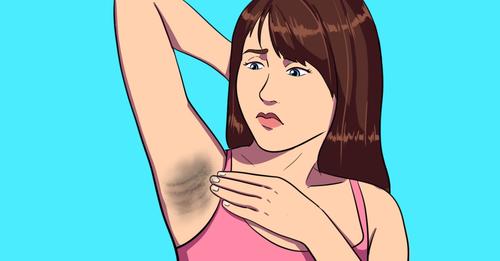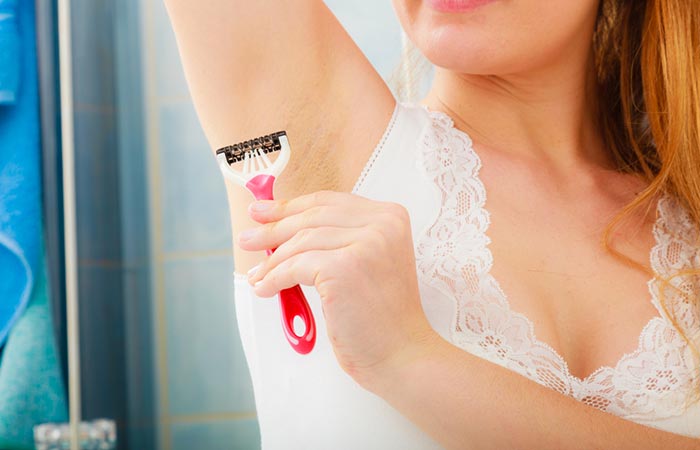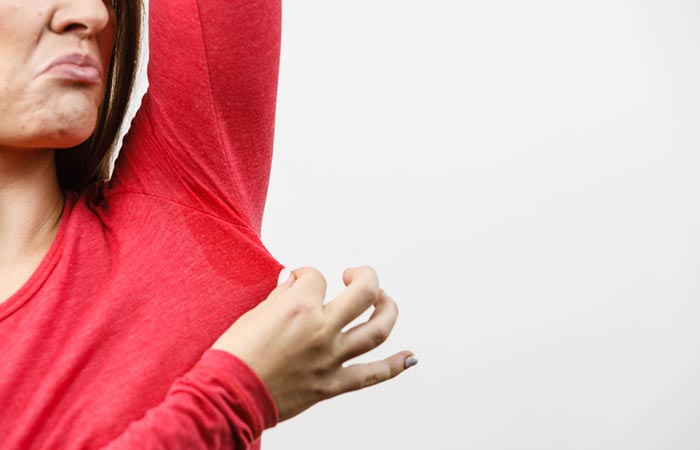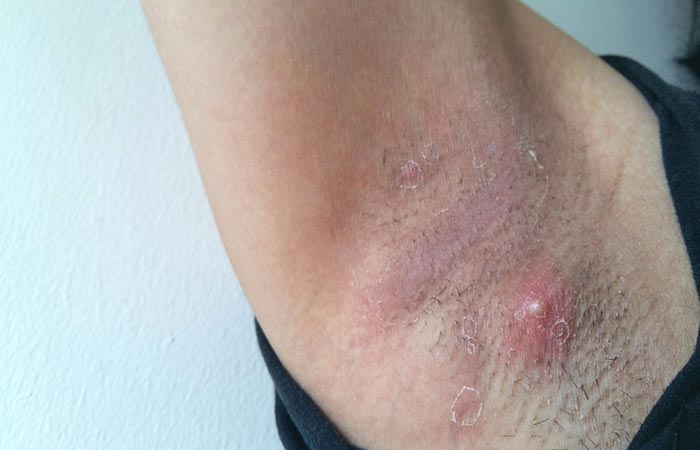How many times have you stood in front of the wardrobe, picked that tank top up, and threw it back in? You know you can’t wear it because of your dark armpits. This is not only disheartening but also overwhelming because you don’t know what on earth has suddenly made your underarms dark. If you are curious and want to know why, here are 8 reasons your underarms are dark.
1. Hair Removal Methods
The most common methods used by women to remove hair are shaving and hair removal creams. They are easy and painless – probably why they are the most used methods. Both these depilation techniques are known to cause dark underarms. However, when it comes to shaving, it is not hyperpigmentation that causes the skin to become dark. Rather, your skin appears dark because of the sub superficial hair. Removal of hair from its roots by waxing or tweezing is a better idea to solve this problem.
2. Friction From Clothes
Why are underarms so fussy? The rest of your body loves it when you wear skin hugging clothes, except for the underarms. They are fussy because they sweat. This moisture and the constant friction caused because of tight clothes make your armpits dark and dull. To avoid this constant rubbing against the skin of the underarms, make sure you wear loose and breathable fabrics so that there is no sweating and friction.
3. Dead Skin Build-up
Take some time off and analyze the skin on your underarms. If you don’t mind going out of the way, use a magnifying glass. You will observe the skin is bumpy and has many indents. The dead skin often gets trapped and accumulates in these “potholes.” The best way to avoid this build-up is to exfoliate every other day until the darkness disappears. You could use a simple homemade scrub if you want to avoid the store-bought ones.
4. Infection
It could be a fungal infection or even a bacterial one. Fungal infections like ringworm often occur in the underarms. Constant sweating makes it convenient for microbes to thrive. Ringworm leads to unusual darkening of the skin (1). Bacterial infections like erythrasma also make the underarms dark. In this skin infection, the sweat glands in the underarms and other parts of the body are infected. In the initial stages of the infection, the skin turns pink or red and is accompanied by itching and pain. Eventually, the discoloration turns darker and becomes brown. The condition can be treated with antibiotics, and it is important you don’t neglect this condition or misunderstand this to be a fungal infection.
5. Acanthosis Nigricans
Acanthosis nigricans is a skin condition that makes the skin in the underarms, neck, and groin appear coarse, dark, and velvety (2). This is caused due to an imbalance in the insulin levels and is most commonly observed in association with issues like obesity and diabetes. When there is insulin resistance in the body, there is a wreck in insulin metabolism, and acanthosis nigricans is one of the repercussions. Women battling PCOD usually have dark underarms and groins due to this reason. Reducing weight, regulating insulin levels, and topical application of creams to lighten the skin tone are some of the solutions prescribed by doctors.
6. Contact Dermatitis
Did you get a rash in the underarm because you have just started using a new product? This could be an allergic reaction because the deodorant or the antiperspirant that you are using contains some allergen that is causing inflammation. Quite often, this rash and irritation lead to darkening of the skin. The fragrance-emitting substances are the most common causes of contact allergy (3). The allergy not only darkens the skin in the underarms but also makes it thick and leathery.
7. Hormonal Fluctuations
Women during pregnancy and girls during their puberty often observe that there is pigmentation in certain parts of their bodies, including their underarms. This is called melasma and occurs as a result of an imbalance in the amounts of progesterone and estrogen. Melanocytes are the cells that secrete the pigment melanin. Overproduction of melanin causes the skin to look dark. During episodes of hormonal imbalance, there is an overstimulation of melanocytes, which leads to pigmentation. Bringing about balance in the hormones naturally and topical application of creams and lotions are some methods suggested by dermatologists to rid yourself of this problem.
8. Post-Inflammatory Hyperpigmentation
As the name suggests, this is a pigmentation that is caused when there’s inflammation in any part of the body due to a physical injury. This can happen in any part of the body, including the underarms. When you wax or shave your underarms regularly, the skin is more prone to cuts and wounds. Also, it becomes ultra sensitive immediately after shaving, which makes it even more vulnerable. If you experience darkening of the skin post your hair removal session, it could be because of this post-inflammatory hyperpigmentation.
The internet’s full of natural home remedies that could help you deal with pigmentation. However, if you sense there’s a more serious underlying problem that can’t be solved without medical supervision, make sure you go to the dermatologist before it is too late. How do you deal with underarm hygiene and discoloration? Comment below to let me know.





